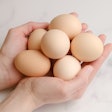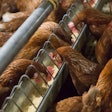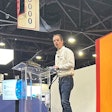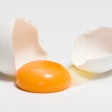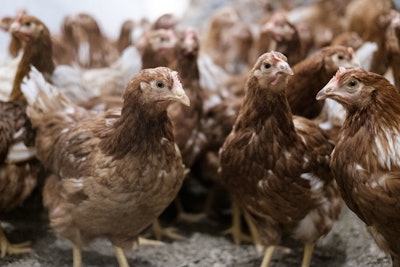
Cage-free pullets can endure high levels of stress when tested with a high stocking density and tight feeder spaces, indicating that these stressors do not influence welfare, according to research from Purdue University.
A pullet’s environment can have a lasting impact on behavior, welfare, health and productivity, and the research findings show that current cage-free rearing practices are effective and that producers can utilize a wide range of stocking densities, explained Jennie-O Staff Veterinarian Meagan Abraham, PhD, at the 2024 PEAK conference.
“The results of these studies show that pullets are resilient and resistant to several stressors,” she stated.
Currently, there are no cage-free stocking density guidelines for pullets in the U.S., only recommendations from genetics companies. To help establish parameters that egg producers can use, Abraham and her team conducted research to evaluate density requirements for pullets in cage-free systems and identify measurements of stress and welfare in pullets.
How can the industry measure stress in birds?
Some of the welfare parameters evaluated in the research included feather coverage, feed conversion ratio (FCR) and bursal size. However, it remains unclear if any of these parameters can definitively be used to measure stress, she explained.
A lower stocking density showed to cause a bigger bursa in cage-free pullets, but Abraham is unclear if this significantly impacts bird immunity. Additionally, feather coverage and FCR were slightly improved in lower stocking density environments, however, the results seem to be highly dependent on the strain of bird being used, as white strains showed to thrive better in stressful environments compared to brown strains.
“We evaluated a multitude stress and welfare parameters, however, most of the measurements we looked at were only affected by strain and age, very few were affected by stocking density,” she said. Abraham also questioned if genetic selection is playing a role in stress toleration.
In the future, Abraham said more research should be conducted to determine if these stressors affect the pullet into adulthood and if the same pullet welfare results can be obtained in commercial settings.






